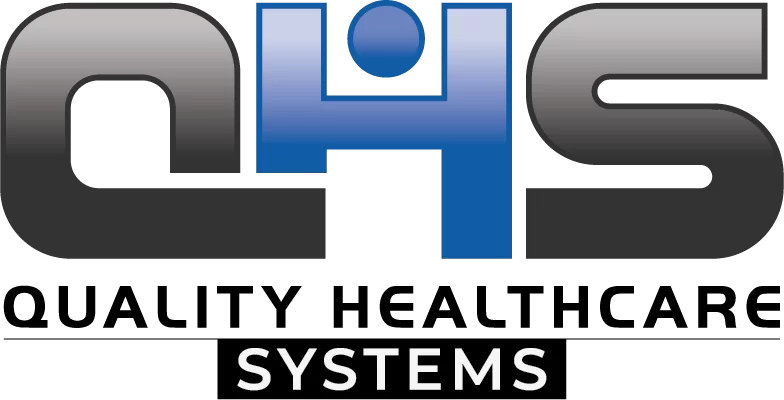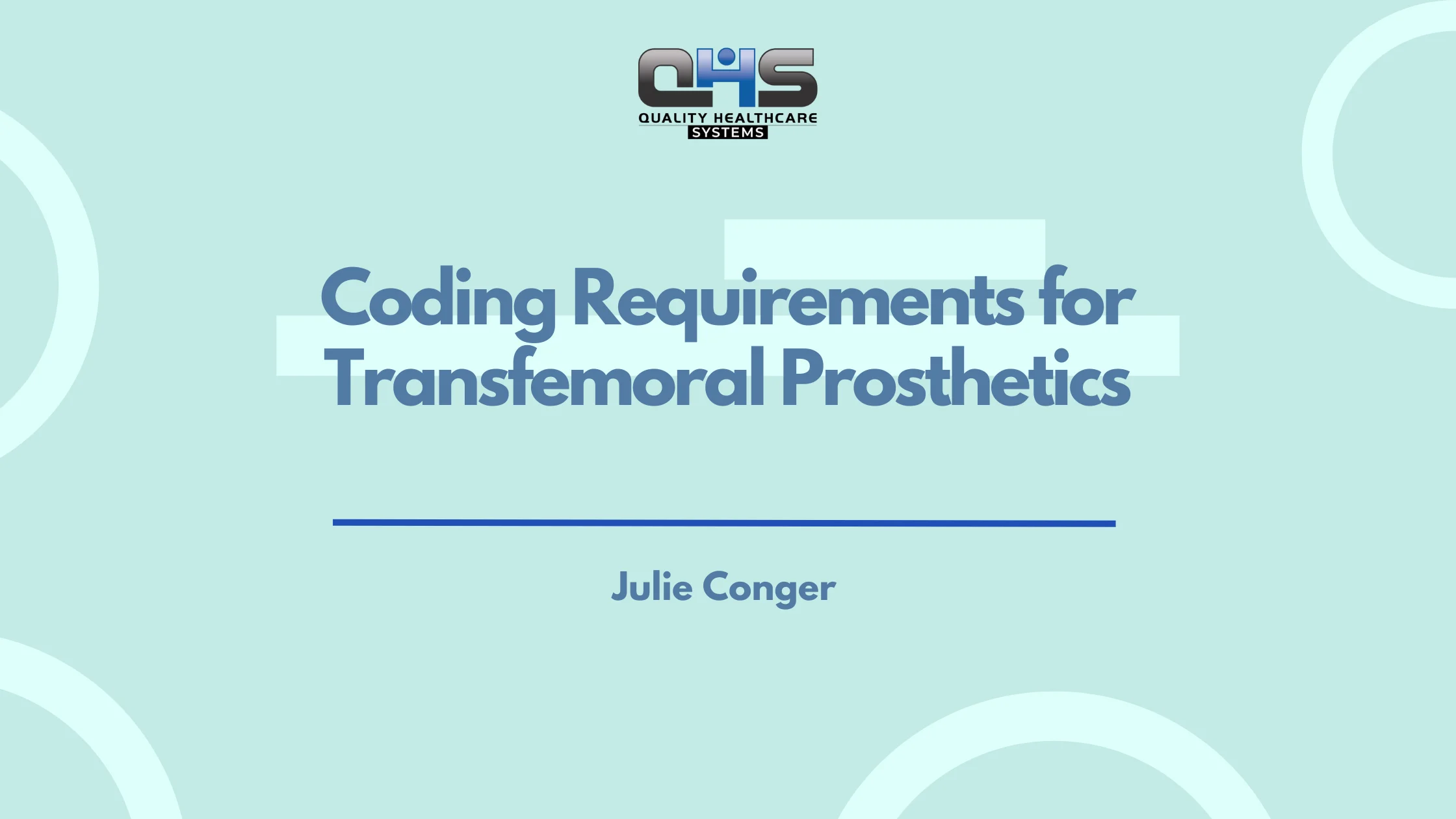If you’re involved in the billing process for prosthetic limbs, particularly transtibial or below-knee prosthetics, you already know it’s not just about submitting codes. It’s about aligning clinical documentation with payer guidelines, understanding how functional levels determine eligibility, knowing when prior authorizations apply, and submitting claims that stand up to audits.
This guide walks you through every critical aspect of the billing cycle—from diagnosis coding to reimbursement—for transtibial prosthetics, helping you avoid denials, delays, and costly resubmissions.
What is Transtibial Prosthetics?
A transtibial prosthesis is an artificial limb designed for individuals who have undergone a below-knee amputation. This type of prosthesis typically consists of a socket that fits over the residual limb, a suspension system to keep the prosthesis attached, a pylon that provides structural support, and a prosthetic foot.
Each component is not only medically significant but also financially distinct in billing, as each part is identified and reimbursed through separate L-codes. Proper identification and justification of each component is foundational to a successful claim.
ICD-10 Diagnosis Codes for Below-Knee Amputations
Correct ICD-10 coding is essential to establish medical necessity. For transtibial amputations, the diagnosis codes typically reflect the absence of the lower leg. Commonly used codes include Z89.511 for the acquired absence of the right leg below the knee, and Z89.512 for the left leg.
These codes may be accompanied by secondary diagnosis codes that explain the medical condition leading to the amputation, such as diabetes with complications or trauma. Ensuring the primary and secondary diagnoses are both present and accurate is a critical step that directly impacts reimbursement.
ICD-10 Diagnosis Codes for Below-Knee Amputations
| ICD-10 Code | Description | Billing Notes |
|---|---|---|
| Z89.511 | Acquired absence of right leg below knee | Used as primary diagnosis for right-side transtibial prosthesis claims |
| Z89.512 | Acquired absence of left leg below knee | Used as primary diagnosis for left-side transtibial prosthesis claims |
| Z89.519 | Acquired absence of unspecified below-knee leg | Use with caution; avoid unless absolutely no laterality is documented |
| S88.111A | Complete traumatic amputation of right lower leg, initial | Use when billing for recent trauma-related amputation |
| S88.112A | Complete traumatic amputation of left lower leg, initial | Traumatic cases should include laterality and initial vs. subsequent encounter |
| S88.811A | Partial traumatic amputation of right lower leg, initial | Relevant when only part of lower leg was amputated |
| S88.812A | Partial traumatic amputation of left lower leg, initial | Ensure trauma documentation supports this code |
| E11.52 | Type 2 diabetes with diabetic peripheral angiopathy + gangrene | Often used when diabetes led to limb loss |
| I96 | Gangrene, not elsewhere classified | Can be used as secondary diagnosis supporting amputation necessity |
Related Posts:
- Medical Billing for Hemipelvectomy Prosthetic
- Medical Billing for Spinal Orthoses
- Prosthetic Billing for Lower Limbs
L-Codes for Transtibial Prosthetic Components
L-codes represent the individual components of the prosthetic device and are central to billing. Each code corresponds to a specific item, such as the socket type, the type of pylon used, the kind of foot selected, and any additional accessories such as sleeves or liners. For instance, energy-storing feet, locking mechanisms, and cosmetic covers each have distinct L-codes.
The codes must match the patient’s functional level and the medical documentation provided. Inaccuracies here are a leading cause of denials and audits.
L-Codes for Transtibial Prosthetic Components
| L-Code | Component Description | Notes |
|---|---|---|
| L5700 | Below knee, custom-fabricated socket | Primary socket for transtibial prosthesis |
| L5780 | Addition to lower extremity prosthesis, vacuum suspension system | Use only if vacuum suspension is clinically necessary |
| L5620 | Below knee, addition, suction suspension | Standard suspension; used in many transtibial cases |
| L5630 | Below knee, addition, pin lock or lanyard suspension | Commonly used for mechanical suspension setups |
| L5645 | Addition to lower extremity, endoskeletal, pylon | The structural connecting element of the prosthesis |
| L5970 | Foot, SACH (solid ankle cushion heel) | Basic foot used in lower K-levels (e.g., K1, K2) |
| L5974 | Foot, energy storing | Justifiable for patients at K3 or K4 levels |
| L5980 | Foot, multi-axial, dynamic response | Often used for active users (K3–K4), requires strong functional justification |
| L5930 | Alignment components for adjustment | Use when initial fitting requires dynamic alignment |
| L5685 | Addition, knee sleeve, suspension | Usually neoprene or gel sleeve; helps retain socket |
| L5960 | Addition, hydraulic or pneumatic ankle unit | For highly active users (K4), rarely covered without extensive proof |
| L5610 | Test socket | Temporary socket used before final device fabrication |
| L5637 | Addition, soft insert, below knee | For cushioning residual limb inside the socket |
| L5679 | Custom-fabricated protective cover | Cosmetic or protective shell added over prosthesis |
| L5785 | Addition to lower limb prosthesis, flex-walk system | Advanced foot mechanism, K3/K4 only with proper documentation |
Reminder: Always pair L-codes with appropriate modifiers (e.g., RT/LT, KX) and ensure they match the patient’s documented functional level.
Documentation Requirements for Compliant Billing
No claim can succeed without thorough documentation. A valid prescription from the treating physician must accompany every claim, specifying the need for the prosthesis. The patient’s functional level, often described using the K-level scale, must be documented with clear clinical justification.
The prosthetist’s notes should describe the rationale behind each selected component, and the date of delivery must be clearly recorded with a signed proof-of-delivery document. When any of these pieces are missing or misaligned, the payer may view the claim as incomplete and deny reimbursement.
Required Documentation Checklist:
-
Physician’s detailed prescription
-
ICD-10 diagnosis code supporting the medical necessity
-
Clinical notes documenting K-level and functional assessment
-
Prosthetist’s detailed component justification
-
Prosthetic evaluation and fitting notes
-
Final prosthesis delivery date
-
Signed proof-of-delivery (POD) form
-
Face-to-face evaluation documentation (if required)
-
Detailed written order prior to delivery (DWOPD)
-
Documentation of patient’s goals and expected outcomes
-
Medical necessity for each L-code billed
-
Supplier’s records matching prescription and delivery
-
Any prior authorization or payer-specific forms (if applicable)
Would you like this documentation checklist formatted as a downloadable PDF or embedded into your billing SOP manual?
Functional Levels (K-Levels) and Reimbursement
Payers use K-levels to assess a patient’s potential to use a prosthesis effectively. These levels range from K0, indicating no potential for ambulation, to K4, representing a high level of activity such as athletic movement. The assigned K-level dictates which components are considered medically necessary.
For instance, a patient at K3 may qualify for an energy-return foot, whereas someone at K1 may be restricted to a basic foot. Proper documentation of K-levels, including functional assessment and physician concurrence, is essential to justify higher-cost components.
Prior Authorization: When and Why It Matters
Some insurers, particularly commercial and Medicare Advantage plans, require prior authorization for transtibial prostheses. This step involves submitting clinical documentation, diagnosis codes, L-codes, and functional assessments before the device is fabricated or delivered. The goal is to receive preliminary approval from the payer, reducing the risk of post-delivery denials.
Failing to obtain prior authorization when required often results in non-payment, regardless of how medically necessary the prosthesis may be.
DMEPOS Enrollment and Accreditation Requirements
To bill Medicare and some commercial payers for prosthetics, your organization must be enrolled as a Durable Medical Equipment, Prosthetics, Orthotics, and Supplies (DMEPOS) supplier. Enrollment through PECOS and accreditation from a CMS-recognized body such as ABC or BOC are mandatory.
Your business must also comply with all applicable state licensure rules. Without this status, even perfectly coded claims will be denied due to provider ineligibility.
Medicare’s Billing Rules and Reimbursement Framework
For Medicare Part B, transtibial prosthetic claims are typically processed on a fee-for-service basis. Reimbursement is determined by the Medicare DMEPOS Fee Schedule, with the patient responsible for 20 percent coinsurance unless they have secondary coverage. Claims must be submitted after the prosthesis is delivered and verified.
The use of correct HCPCS codes and modifiers is critical to payment. Claims should be submitted using the CMS-1500 form and include all required documentation, with copies available in the event of an audit.
Essential Modifiers for Claim Accuracy
Modifiers clarify details of the service or device being billed. RT and LT indicate the side of the body. KX signifies that documentation is on file supporting the claim. The GA modifier is used when an Advance Beneficiary Notice (ABN) has been signed, and the GY modifier indicates a non-covered item, often submitted for tracking purposes.
These modifiers must align with your documentation. Incorrect or missing modifiers can cause valid claims to be rejected or underpaid.
Timely Filing Limits and Claim Submission Rules
Each payer sets deadlines for submitting claims. Medicare allows twelve months from the date of service, while commercial plans often have shorter timeframes ranging from 90 to 180 days.
Failing to submit within these deadlines results in non-payable claims. It’s vital to have internal systems that track submission windows to ensure no claims fall through the cracks. Resubmissions after the deadline are generally not allowed and can create permanent revenue loss.
Competitive Bidding Program and Prosthetic Billing
Unlike some DME items, prosthetics are currently exempt from Medicare’s competitive bidding program. This means suppliers are not limited to using competitively awarded vendors for these items.
However, this status may be revisited in future CMS rulings, so staying updated is essential. While not subject to bidding, reimbursement is still governed by the fee schedule and requires complete compliance with documentation and coding standards.
Related Posts:
Billing for Prosthetic Repairs and Replacements
Over time, components of a transtibial prosthesis may require repair or replacement. Medicare allows for repairs if they extend the life of the prosthesis and are cost-effective. Replacements may be covered after five years or earlier if medically necessary due to changes in the residual limb or irreparable wear.
Billing must include a description of the problem, the need for repair or replacement, and documentation from the prosthetist. Each part or repair service has an associated L-code and must be billed accordingly, with appropriate justification.
Common Reasons for Denials and How to Avoid Them
Claims are frequently denied due to missing or incomplete documentation, inaccurate coding, inappropriate modifiers, billing for services not yet delivered, or failure to obtain prior authorization.
The most effective way to avoid denials is to develop a thorough internal audit process that reviews each claim for completeness and accuracy before submission. Aligning every detail of the claim with payer policies is the best strategy for ensuring approval.
Differences Between Medicare and Private Insurance Billing
While both Medicare and private insurers rely on L-codes and similar documentation requirements, commercial payers may have their own medical policies that differ from CMS guidelines. They may require additional documentation, have unique modifier requirements, or enforce stricter timeframes for authorization.
Some may also reimburse at contracted rates rather than Medicare’s published fee schedule. Understanding and adjusting for each payer’s preferences is key to consistent cash flow.
Handling Appeals for Denied Prosthetic Claims
If a claim is denied, it’s crucial to first identify the denial code and reason. From there, the appeals process begins with assembling all necessary documentation and writing a clear explanation or correction. For Medicare, the appeals process includes five levels, starting with redetermination and potentially ending at judicial review.
Timeliness and accuracy are critical at each stage. Success in appeals often depends on having solid documentation that clearly supports medical necessity.
Best Practices for Transtibial Prosthetics Billing
Effective prosthetics billing combines clinical alignment, administrative precision, and constant payer awareness. Establishing detailed intake and documentation checklists, training staff regularly, performing internal audits, and using technology to validate codes can significantly reduce errors.
Staying current with CMS updates and payer policy changes is essential, especially in a regulatory environment that continues to evolve.
Final Thoughts
Billing for transtibial prosthetics is both technical and strategic. The clinical and administrative teams must work together to ensure that every detail—from K-levels to modifiers—is documented and aligned with payer expectations.
By following this comprehensive guide and maintaining internal compliance practices, your organization can reduce denials, accelerate payment timelines, and ultimately focus on delivering high-quality care to those who need it most.





